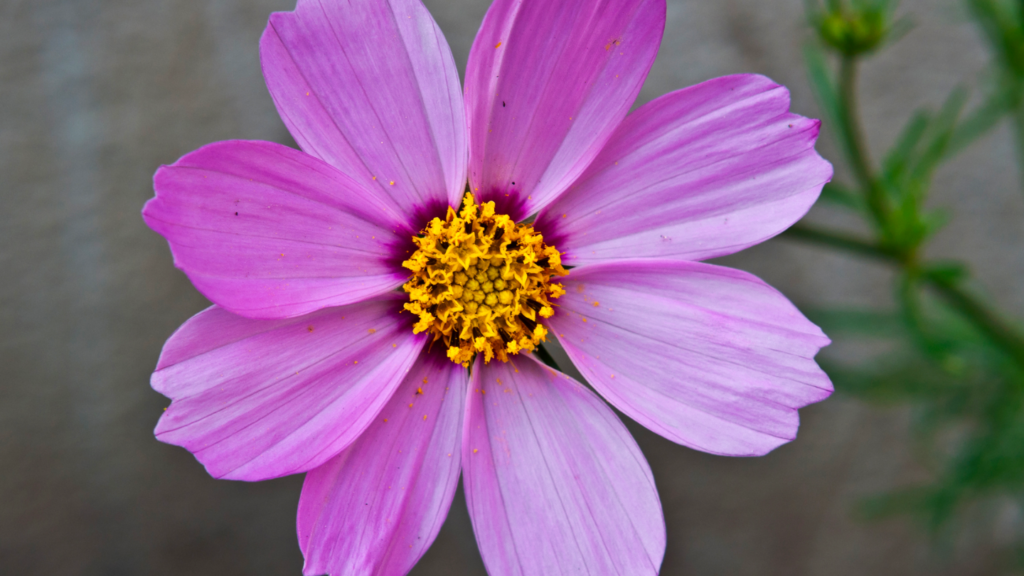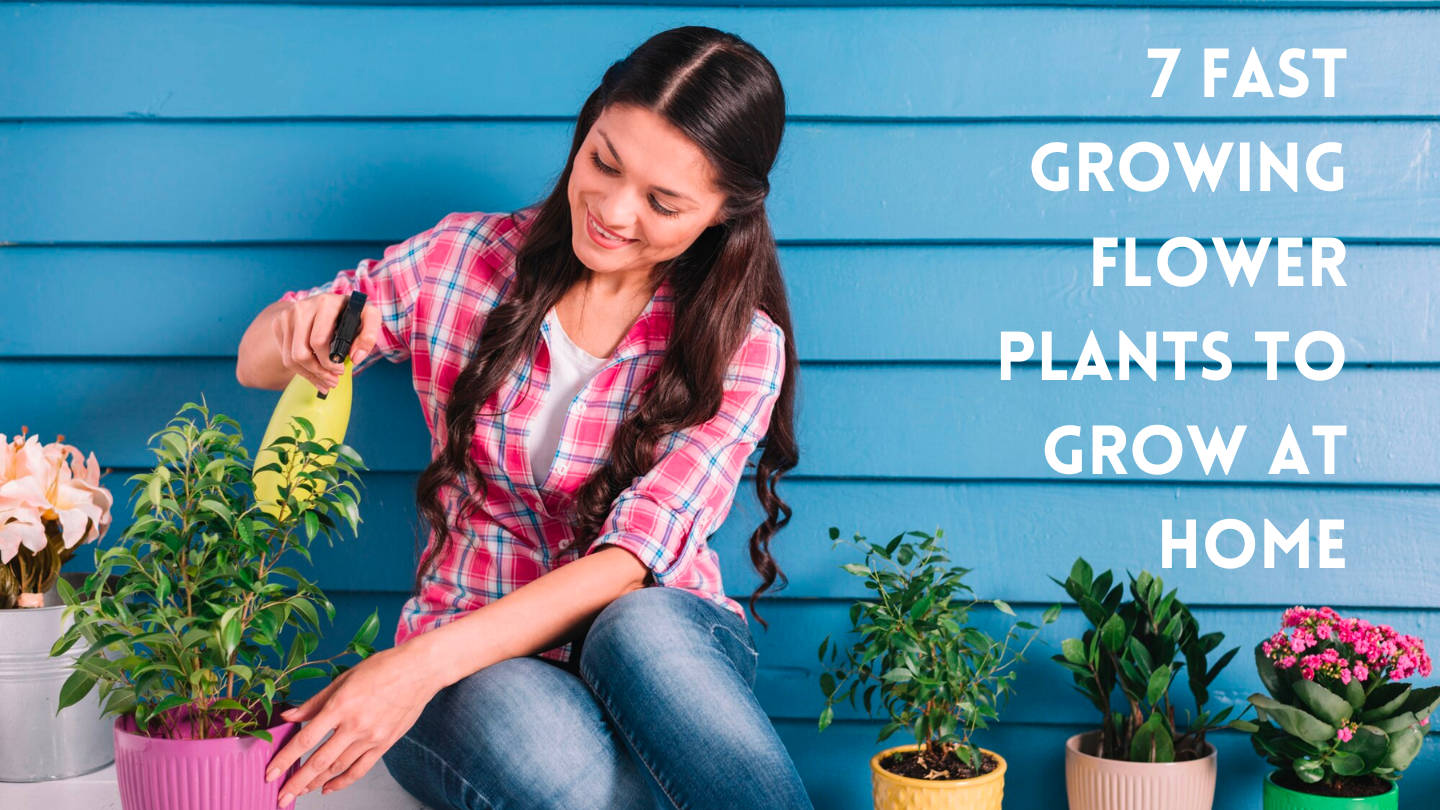Fast-growing flower plants are indeed a delight for gardeners looking to add vibrant colours to their spaces without a long wait. Here are some popular options known for their quick growth and beautiful blooms.
Benefits of Growing Flowers at Home
Growing flowers at home offers a multitude of benefits beyond aesthetic pleasure. It provides an opportunity to connect with nature, reduces stress levels, and promotes environmental sustainability by attracting pollinators such as bees and butterflies.
Choosing the Right Flower Plants
Before delving into the realm of gardening, it’s essential to carefully consider key factors. This entails evaluating whether you intend to cultivate flowers indoors or outdoors, the prevailing weather patterns in your region, and the present soil conditions of your cherished garden.
1. Marigolds

Marigolds are renowned for their vibrant hues and their knack for warding off pests. They’re a breeze to cultivate from seeds and boast a rapid bloom, infusing any garden with a delightful charm.
2. Zinnias

Zinnias are highly favoured among garden enthusiasts because of their wide range of vibrant colours and diverse forms. They are resilient against droughts and attract butterflies, making them an excellent choice for any pollinator garden.
ALSO READ : 10 Fruits To Consume For Better Skin Glow
3. Sunflowers

Sunflowers are indeed iconic symbols of summer, renowned for their towering height and vibrant, cheerful blooms. Their sunny disposition and robust appearance make them a favourite among gardeners, particularly for those who are just starting out. With their fast growth rate and low-maintenance nature, sunflowers are an excellent choice for beginners looking to add a splash of colour and joy to their gardens. Whether planted in rows along a fence or scattered throughout a backyard, these radiant flowers never fail to captivate with their beauty and bring a touch of summer warmth wherever they bloom.
4. Nasturtiums

Nasturtiums are not just visually appealing; they are also edible, offering peppery-flavoured leaves and flowers. They flourish even in nutrient-poor soil conditions and are suitable for cultivation in containers or hanging baskets.
5. Cosmos

The cosmos plant boasts dainty petals resembling daisies, adorning gardens in a magnificent spectrum of pink, white, and purple. Not only is this flower resilient in arid environments, its charming presence also attracts the graceful flutters of butterflies and the enchanting hum of hummingbirds to your outdoor oasis.
6. Sweet Alyssum

Sweet Alyssum is prized for its delicate clusters of tiny white flowers that emit a sweet fragrance. It’s perfect for borders, containers, or ground cover and attracts beneficial insects.
7. Morning Glories

Morning Glories are fast-growing vines with stunning trumpet-shaped flowers that bloom in the morning and close by midday. They are versatile and can be grown on trellises, fences, or as ground cover.
Climate and Soil Requirements
Certainly! Selecting the right plants for your garden involves understanding the climate and soil conditions of your area. Different flower species have specific preferences for climate and soil types, so taking these factors into account will help ensure your plants thrive.
For example, if you live in a hot and dry climate, you might consider drought-tolerant flowers like succulents or lavender. In contrast, if you have a cooler and wetter climate, plants like hydrangeas or ferns might be better suited.
Similarly, soil composition plays a crucial role in plant growth. Some plants prefer well-draining sandy soil, while others thrive in rich, loamy soil. Conducting a soil test can help you determine the pH level and nutrient content of your soil, allowing you to choose plants that will flourish in those conditions.
By understanding your local climate and soil composition, you can select flower species that are best suited to your garden environment, ensuring a beautiful and thriving landscape
Planting and Caring Tips
To ensure the success of your fast-growing flower plants, follow these planting and caring tips:

Soil Preparation
Ensure the soil is well-draining and amend it with compost or organic matter for added nutrients.
Watering and Sunlight Requirements
Water plants regularly, keeping the soil evenly moist but not waterlogged. Most flowering plants require at least six hours of sunlight per day.
Fertilisation
Feed plants with a balanced fertiliser every few weeks to promote healthy growth and abundant blooms.
Pruning and Deadheading
To encourage continuous blooming and discourage seed production, it’s advantageous to regularly remove wilted flowers. This practice prompts the plant to allocate its energy towards generating new blooms rather than diverting resources into seed formation.
Common Problems and Solutions
Despite your best efforts, you may encounter some challenges while growing fast-growing flower plants. Here are some common problems and solutions:

Pests and Diseases
To effectively care for your plants, it’s important to regularly inspect them for any signs of pests such as aphids or diseases like powdery mildew. Here’s a step-by-step guide on how to monitor and address these issues using organic methods:
Overwatering vs. Underwatering
Pay attention to the moisture levels in the soil and adjust your watering schedule accordingly. Overwatering can lead to root rot, while underwatering can cause wilting and stunted growth.
Managing Growth
Some fast-growing plants may become invasive or overcrowd other plants in the garden. Regular pruning and thinning can help manage growth and maintain a balanced garden ecosystem.




